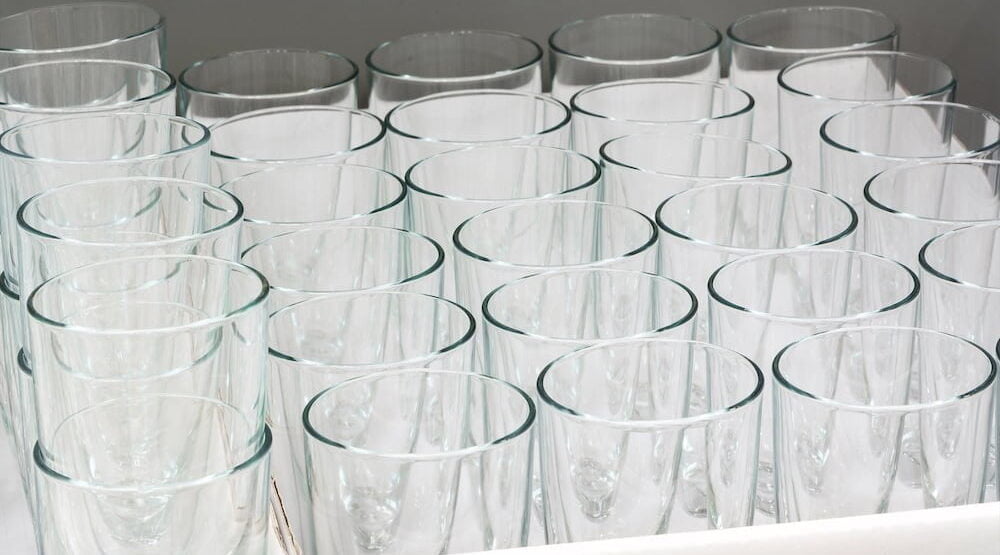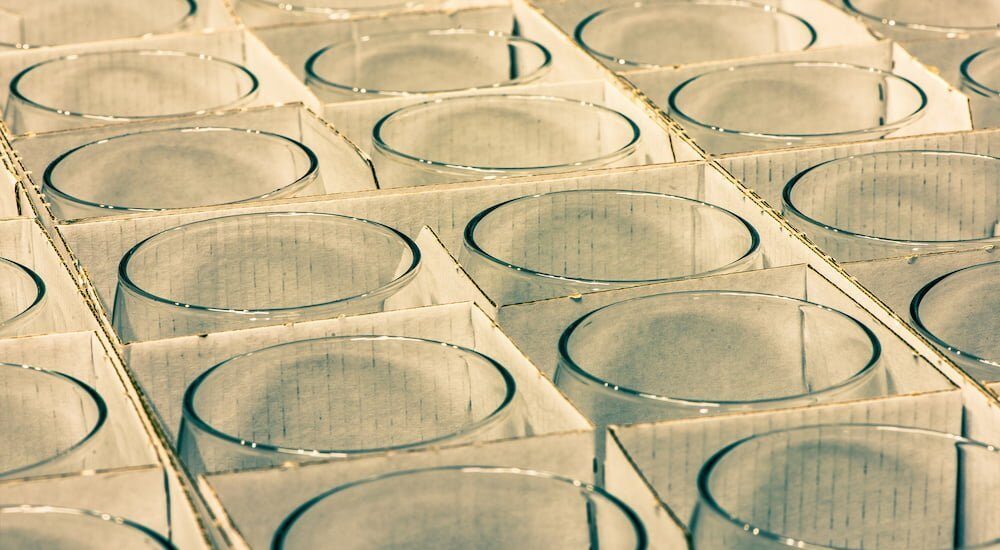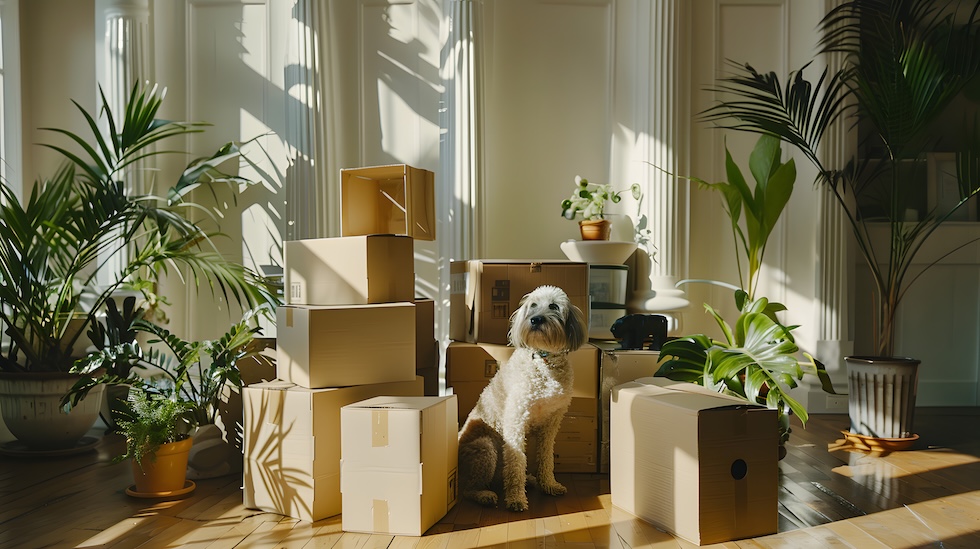Safe & Easy Glassware Packing Tips for a Smooth Move

Moving to a new home is an exciting adventure, but it can also be a stressful experience, especially when it comes to packing fragile items like glasses. The thought of your cherished glassware arriving at your new place in pieces is enough to make anyone anxious.
However, with the right techniques and materials, you can ensure that your glasses survive the journey unscathed. Packing glasses can be a bit tricky, but with the right approach, it’s quite manageable. By taking the proper precautions and using the right materials, you can ensure your glassware arrives at your destination safely and securely.
By following a few simple steps and using the appropriate packing supplies, you can protect your glassware from the bumps and jolts of the moving process. Whether you’re dealing with delicate stemware or sturdy tumblers, there are proven methods to keep them safe and secure during transit.
We’ll guide you through the best way to pack glasses for moving, from gathering essential materials to mastering the art of wrapping and boxing your glassware. We’ll also share expert tips and tricks to make the process more efficient and effective, so you can focus on the excitement of settling into your new home.
Essential Packing Materials For Glasses
Having the right materials on hand is crucial when packing glasses for a move. Each item, from sturdy boxes to soft packing paper, is important in safeguarding your glassware as it travels.
Sturdy Moving Boxes
The first step in ensuring the safety of your glasses is choosing the right boxes. While standard cardboard boxes can work, investing in specialized moving boxes designed for glassware is highly recommended.
Dish Barrel Boxes
Dish barrel boxes, also known as dish pack boxes, are extra-sturdy corrugated cardboard boxes designed specifically for packing fragile items like glasses, dishes, and china. They have thicker walls and double-walled construction for added protection.
Cell Kits With Dividers
Cell kits with dividers are another excellent option for packing glasses. They come with cardboard dividers that create individual compartments for each glass, preventing them from clinking against each other during the move.
Soft Packing Paper And Bubble Wrap
Soft packing materials like packing paper and bubble wrap are essential for wrapping and cushioning your glasses. Packing paper is an affordable and easy-to-use option, while bubble wrap provides extra protection for particularly fragile items.
Packing Tape And Permanent Marker
Stock up on packing tape and a permanent marker. Packing tape is essential for sealing your boxes securely, and a permanent marker is handy for labeling them.
Alternative Materials: Clothing, Socks, And Shirts
If you run low on packing paper or bubble wrap, don’t worry. Soft clothing items like socks, t-shirts, and towels can be used as alternative packing materials to wrap and cushion your glasses.

Preparing The Boxes For Packing Glasses
Before wrapping and packing your glasses, preparing your boxes properly is crucial. A well-prepared box provides a stable and secure foundation for your glassware, minimizing the risk of damage during the move.
Securely Tape The Bottom Of The Box
Begin by assembling your box and checking that it’s in good condition without any tears or dents. After folding the bottom flaps, use packing tape to secure them in place, applying the tape in a cross pattern to cover the seams where the flaps meet.
Add A Cushioning Layer Of Packing Paper
Create a soft, cushioning layer at the bottom of the box by crumpling a few sheets of packing paper loosely. Place the crumpled paper in the bottom, covering the entire surface to act as a shock absorber and protect your glasses from impacts during transit.
Make The Box Easy To Access
When packing glasses, making the box easy to access is important for convenience when unpacking at your new home. Leave one of the top flaps unsealed until you’ve finished packing your glasses, allowing you to easily add or remove items as needed.
If you’re using a professional home moving service, inform them which boxes contain your fragile glassware. They’ll handle these boxes with extra care, ensuring they’re loaded and unloaded safely.
By following these simple steps to prepare your boxes, you’ll create a secure environment for your glasses during the move. With your boxes ready, you can confidently start wrapping and packing your glassware, knowing you’ve taken the necessary precautions to protect them.
Essential Glass Packing and Wrapping Techniques
When packing glasses for moving, the wrapping technique you use can mean the difference between intact items and broken pieces. Professional movers recommend starting with a clean, flat surface and having all your packing materials within reach. The key is to create multiple layers of protection while ensuring each glass is individually secured.
The most effective technique involves creating a cushioning cocoon around each glass using packing paper. Start by laying out a sheet of packing paper diagonally, then place the glass at one corner. Roll the glass in the paper, tucking in the excess at the top and bottom. This creates the first protective layer. For added protection, repeat this process with a second sheet of paper.
For particularly delicate items like crystal glasses or antique pieces, consider using bubble wrap as an additional outer layer. However, never let bubble wrap come into direct contact with the glass surface, as this can create pressure points that might lead to breakage during transit.
Double-Wrapping Method for Extra Protection
The double-wrapping method provides maximum protection for your glassware during a move. Begin with standard packing paper for the inner layer, ensuring all surfaces are covered. Then add a second layer using different material – either more packing paper or bubble wrap – creating a multi-layered defense against impacts and pressure points.
This method is particularly effective for stemware and other delicate pieces. The first layer protects against surface scratches and provides basic cushioning, while the second layer adds structural support and impact resistance. Always ensure the stem of wine glasses receives extra attention during this process.
Testing Your Packing Technique
Before committing to a particular wrapping method for all your glasses, test it with a single piece. Gently shake the wrapped glass and listen for any movement. A well-wrapped glass should feel solid and secure with no shifting inside the wrapping. If you hear or feel movement, add another layer of protection.
Remember to conclude each wrapping session by checking that all glasses are properly secured and labeled. This attention to detail will ensure your glassware arrives safely at your new home.
Sorting And Grouping Glassware Items
Before wrapping and packing your glasses, it’s important to sort and group them properly. This step will make the packing process more efficient and ensure that your glassware is well-protected during the move.
Separate Glasses By Type And Size
Gather all your glassware in one place, such as on a table or countertop. Separate your glasses by type and size, grouping wine glasses, tumblers, mugs, and shot glasses together.
When grouping glasses by size, consider nesting smaller glasses inside larger ones to save space. Just be sure to wrap each glass individually before nesting them to prevent scratches and chips.
Prioritize Fragile And Valuable Pieces
As you sort your glassware, take note of any particularly fragile or valuable pieces, such as delicate stemware, antique glasses, or sentimental items. Set these pieces aside and plan to give them extra attention when wrapping and packing.
Consider using additional padding, such as bubble wrap or foam sheets, for these delicate items. You may also want to pack them in separate, smaller boxes to minimize the risk of damage during the move.
By taking the time to sort and group your glassware items before packing, you’ll create a more organized and efficient process. This approach also allows you to prioritize your most fragile and valuable pieces, ensuring that they receive the extra care and attention they need to arrive safely at your new home.
Step-by-Step Guide: How to Pack and Wrap Glasses for Moving
Now that you’ve sorted and grouped your glassware, it’s time to start packing. By following these step-by-step instructions, you can ensure that your glasses are well-protected and ready for the move.
Best Ways to Wrap and Pack Different Types of Glassware
Each type of glass requires a slightly different approach to wrapping, depending on its shape, size, and fragility. Here’s how to wrap various types of glassware:
Wine Glasses And Stemware
Place the wine glass in the center of a sheet of packing paper, with the bowl facing down. Gently fold the paper around the bowl and stem, tucking it in as you go, then twist the excess paper at the base of the stem to create a secure wrap. For extra protection, add a second layer of paper or bubble wrap.
Tumblers And Drinking Glasses
Position the glass in the center of a sheet of packing paper, with the opening facing up. Fold the paper around the glass, tucking it in as you go, then twist the excess paper at the top to secure it in place.
Mugs And Cups
Wrap mugs and cups similarly to tumblers, but pay extra attention to the handles. After wrapping the body of the mug or cup, fold a separate piece of paper around the handle and tuck it in to ensure it’s well-cushioned.
Shot Glasses And Small Items
For shot glasses and other small glassware, consider wrapping them in pairs or groups to save time and space. Place two or more glasses in the center of a sheet of packing paper, with a layer of paper between each glass, then fold the paper around the group of glasses, tucking it in securely.
Placing Wrapped Glasses In The Box
Once your glasses are wrapped, it’s time to place them in the box. Here’s how to do it:
Layering And Positioning Glasses
Add a layer of crumpled packing paper or bubble wrap to the bottom of the box for cushioning. Place your wrapped glasses in the box, starting with the largest and heaviest items, laying them on their sides with the rims facing the walls of the box to distribute the weight evenly and prevent the glasses from putting pressure on each other.
Filling Empty Spaces With Packing Paper
As you layer your glasses, fill any empty spaces with crumpled packing paper or bubble wrap to prevent the glasses from shifting during the move and minimize the risk of damage. Continue layering and filling until the box is full, but not overpacked, leaving enough room at the top for a final layer of cushioning.
Packing Other Fragile Items With Glasses
If you have other fragile items to pack, such as china or crystal, you can often pack them in the same box as your glasses. Just be sure to follow these guidelines:
China And Crystal
Wrap each piece of china or crystal individually in packing paper or bubble wrap, using the same techniques as for glasses. Place the wrapped items in the box, starting with the largest and heaviest pieces on the bottom, using plenty of cushioning between each layer to prevent contact and minimize the risk of breakage.
Glass Tabletops And Mirrors
For large, flat items like glass tabletops and mirrors, use specialized picture or mirror boxes designed to provide extra protection for fragile, flat items. Wrap the glass in a layer of bubble wrap or foam sheets, then place it in the box, filling any empty spaces with additional cushioning to prevent shifting.
Remember to take your time, use plenty of cushioning, and don’t hesitate to use extra packing materials for your most delicate pieces. With these techniques, your glasses and other fragile items will be properly wrapped, packed, and protected during your move.
Tips For Ensuring Safe Transport Of Packed Glasses
Packing glasses properly is just the first step in ensuring their safe arrival at your new home. Consider these essential tips for labeling, orienting, and securing your boxes to further protect your glassware during the move.
Labeling And Marking Boxes As “Fragile”
Once your boxes are packed and sealed, label them clearly with the word “Fragile” on all sides using a bold, permanent marker. This will alert movers or anyone else handling the boxes that they contain delicate items requiring extra care.
Indicating Box Orientation With “This Side Up” Arrows
Indicate the proper box orientation with “This Side Up” arrows to ensure your boxes are always stored and transported correctly, with the glasses resting on their sides as intended. Place the arrows on at least two sides of each box for maximum visibility.
Avoiding Overfilling Or Underfilling Boxes
Strike a balance between overfilling and underfilling your boxes when packing glasses. Overfilled boxes can put too much pressure on the glasses, while underfilled boxes allow them to shift and collide during transport.
Aim to fill each box so the glasses are snug but not cramped, with plenty of cushioning to prevent movement.
Considering Double-Boxing For Extra Protection
Consider using the double-boxing method for added protection of your most valuable or delicate glassware. This involves packing your wrapped glasses in a smaller box, then placing that box inside a larger one with additional cushioning to help absorb shocks and vibrations during the move.
By implementing these tips, you can ensure that your carefully packed glasses remain safe and secure throughout the moving process. A little extra attention to labeling, orientation, and cushioning can go a long way in protecting your glassware from the rigors of transport.
For more expert advice on packing and preparing for your move, check out our moving packing tips. With the right techniques and materials, you can make your move a stress-free success.
Frequently Asked Questions
-
What’s the best way to wrap glasses for moving?
The best way to wrap glasses for moving is to use a double-wrapping technique with packing paper. First, wrap each glass diagonally in packing paper, tucking in the edges, then add a second layer of paper or bubble wrap for extra protection, ensuring the stem and rim areas receive additional cushioning for delicate items like wine glasses.
- How do you pack glasses without breaking them?
To pack glasses without breaking them, start by creating a 2-inch cushioning layer at the bottom of a dish barrel box, then wrap each glass individually using the double-wrap method with packing paper. Place heavier glasses at the bottom, fill all empty spaces with crumpled paper, and avoid overpacking the box to prevent pressure points that could cause breakage.
- Should I use bubble wrap or paper for packing glasses?
While both materials have their place, packing paper should be your primary wrapping material as it conforms better to the glass shape and prevents pressure points. Bubble wrap can be used as an additional outer layer for extra protection, but should never be in direct contact with the glass surface to avoid potential stress points that could lead to breakage.
- What is the best way to pack wine glasses for moving?
When packing wine glasses for a move, start by carefully wrapping each glass in soft packing paper or bubble wrap. Make sure to tuck the material into the bowl of the glass for extra protection.
Place the wrapped glasses in a cell box with cardboard dividers, ensuring they don’t touch each other. For stemware, consider using a specialized wine glass box with foam inserts for maximum protection during transit.
- Can I use newspapers to wrap my glasses for moving?
Although newspapers can be used to wrap glasses when moving, they’re not the ideal choice. Newsprint can leave hard-to-remove ink stains on your glassware, and newspaper isn’t as soft or cushioning as packing paper or bubble wrap, leaving your glasses more vulnerable to damage.
- How many glasses should I pack in one box?
The number of glasses you can safely pack in one box depends on the box size and the size of the glasses. As a general guideline, limit the number of glasses per box to avoid overloading and potential breakage.
A standard medium-sized box (around 18x18x16 inches) can usually hold 10-15 glasses, depending on their size and the amount of cushioning used.
- Is it better to pack glasses vertically or horizontally in the box?
When packing glasses in a box, it’s generally better to place them horizontally rather than vertically. Laying glasses on their sides helps distribute the weight evenly and prevents them from putting too much pressure on each other, which is particularly important for stemware, as the stems can easily break if packed vertically.
Always use plenty of cushioning between each glass to keep them from shifting or colliding during transport.
- What should I do if I run out of packing paper while wrapping my glasses?
If you find yourself running out of packing paper while wrapping your glasses, there are several alternative materials you can use. Bubble wrap is an excellent choice, providing both cushioning and protection. Soft cloths like dish towels or t-shirts can also be used to wrap your glasses.
In a pinch, even clean socks or other soft clothing items can work. Just remember to use enough material to fully cushion each glass and keep them from touching each other in the box.
Conclusion
Packing glasses for a move might seem challenging, but with the proper materials, techniques, and attention to detail, you can ensure your glassware arrives at your new home safely. Gather essential supplies like sturdy boxes, packing paper, and bubble wrap, and follow the step-by-step guide to protect your glasses from the rigors of the moving process.
Sort your glassware by type and size, prioritizing fragile pieces. Use the appropriate wrapping techniques for each item.
When placing your wrapped glasses in the box, layer them carefully and fill any empty spaces with extra packing paper to prevent shifting during transport. Label your boxes clearly, indicate the correct orientation, and consider double-boxing for extra protection.
With these tips and techniques, you can pack your glasses with confidence. Look forward to enjoying them in your new home, intact and ready to use.
Related Articles
Where to Move from Texas: Top 10 States for Ex-Texans in 2025

Where to Move from Texas: Top 10 States for Ex-Texans in 2025 Record numbers of Texans are exploring life beyond state lines, driven by soaring housing costs, evolving career landscapes, and the search for new lifestyle opportunities. The decision to leave Texas stirs intense emotions – after all, the Lone Star State‘s unique culture and […]
Read MoreHow to Move a House from One Location to Another: Planning to Completion

Relocating an entire house might seem like something out of a movie, but this remarkable feat of engineering happens more often than you’d think. From preserving historic mansions to saving beloved family homes from coastal erosion, house moving represents the intersection of cutting-edge engineering and practical problem-solving. With project costs typically ranging from $18,000 to […]
Read More




